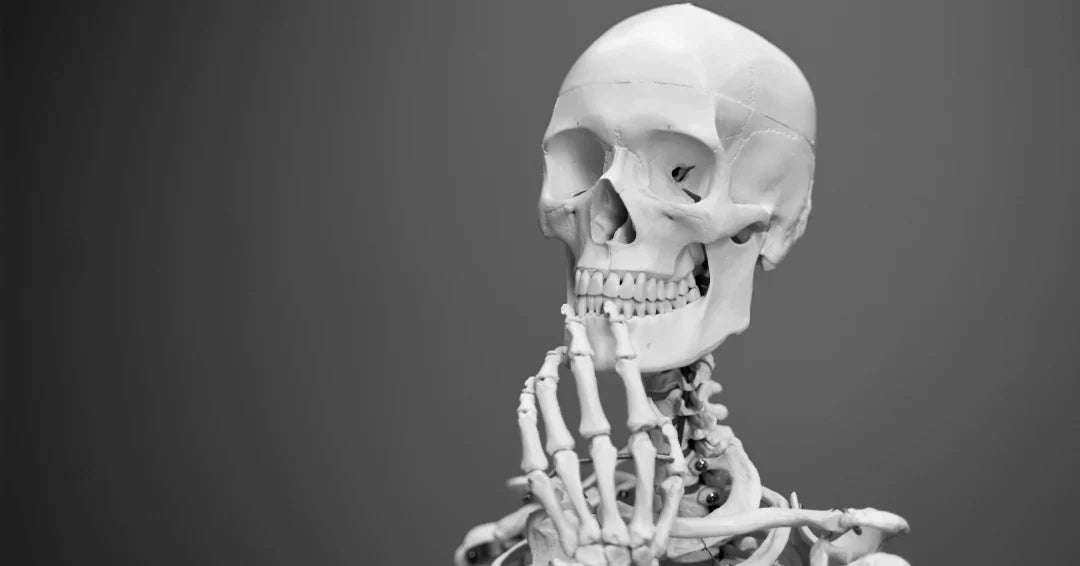Skeletons are pretty incredible, complex structures that are the infrastructure of our bodies. They provide the framework, protect our vital organs, and connect together in a way that allows us to move. Kids probably don't think much about their bones until they actually break one. When that happens, they are forced to really think about the vital role they play underneath layers of skin and muscle. For curious kids, here are some strange skeleton facts that will blow them away.

Strange Facts About the Skeletal System
Kids who are interested in the human body will love learning about the intricate bones that work to protect our organs and allow us to move with extreme flexibility and ease. They will especially enjoy the children's books about skeletons that provide an overview of all the bones in the human body. Meanwhile, here are some pretty strange facts about the skeletal system that will fascinate curious little minds. From the incredible self-healing power to the amazing connectivity of thousands of tiny bones that allow people to move, jump, dance, run, climb, and accomplish other incredible physical feats.
Everything Kids Want to Know About Skeletons
Kids are captivated by skeletons, and it's easy to see why! For starters, children are naturally curious about their own bodies and how they function. Skeletons offer a concrete way for them to understand movement, posture, and what's actually "inside" them. They can even feel their own bones and connect that feeling to what they're learning. This fascination goes deeper when they discover that bones protect vital organs, like their skull safeguarding their brain or their ribs shielding their heart and lungs. This gives them a sense of awe for their body's design and helps them understand the importance of being careful. Plus, skeletons are directly linked to how they run, jump, play, and move! Grasping how bones and muscles cooperate to enable all these actions is both exciting and relatable to their daily lives. Ultimately, exploring skeletons provides children with a fascinating entry point into understanding biology, their own bodies, and the incredible construction of living things.

(1) Babies have 300 bones when they first enter the world.
Over time, almost 100 of these tiny bones fuse together. The end result is a fully formed human skeleton with exactly 206 bones. All of these bones work together, so when one of them is broken, the surrounding bones can no longer function or move correctly.
(2) Bones heal without any medical intervention.
As soon as a bone is broken, the body immediately begins to generate new bone cells to heal it. One purpose of a cast, brace, or splint is to hold the limb in position so that the bone heals properly. Otherwise, the bones could fuse together in a crooked manner and cause serious medical problems later on.
(3) Kids can take care of their skeletons by eating healthy and exercising.
Reading books to your children about eating healthy will teach them the value of nourishment and ensure that their bones will stay strong for the rest of their lives. Encourage them to eat foods rich in calcium like broccoli, fish, and dairy. Exercise is also key in strengthening the bones. Weight-bearing activity is especially helpful to ensure the skeleton does not weaken and cause problems for kids when they are older.

(4) Teeth are stronger than all the bones in a skeleton.
They have an enamel coating that protects all of the sensitive nerves and tissues buried inside of them. Think about all of the work teeth have to do to keep people nourished and fed. They can endure more wear and tear than any single bone in the human body.
(5) Teeth are not bones even though they are part of the skeletal system.
Here's a surprising fact: your teeth aren't actually bones! Even though they're part of your skeleton, teeth are made of different stuff like enamel and dentin. They also grow in a unique way and, unlike bones, can't heal themselves if they crack or break.
(6) Over half of the bones in the human body are located in the hands and feet.
There are a total of 27 bones in each hand and 26 bones in each foot. In other words, of the 206 bones in the human body, 106 of them are in the hands and feet.
(7) The femur is the longest bone in the human body.
This important bone that extends from the hip to the knee and plays a crucial role an allowing humans to stand and move around. The femur supports many critical muscles, ligaments, and tendons. Since this bone is so strong, it takes a severe event like a traumatic fall or car accident to break it.
(8) The tiniest bone in the human body is located in the ear.
The stapes, located in the middle ear, measures a mere two to three millimeters long. This miniature Y-shaped bone plays an enormous role, along with the anvil and hammer bones, by transforming sounds into waves for the brain to comprehend. If this fragile bone is broken or damaged in some way, the result is either partial or total loss of hearing.
(9) Bones are constantly regenerating tissue.
Like many other parts of the human body that are always in a state of repair, the skeleton has a remarkable way of creating new collagen. In fact, about every seven to ten years, humans have a brand new skeleton. This bone remodeling process occurs when cells called osteoclasts break down old, weak bone tissue and then osteoblasts step in to create new, stronger structures.
(10) The hyoid bone is the only one not connected to another bone in the body.
The hyoid bone is a unique, U-shaped bone you'll find in the front of your neck, right below your jaw and above your voice box. What makes it truly stand out is that it's the only bone in your entire body that doesn't directly connect to another bone. Instead, a complex web of muscles, ligaments, and cartilage holds it in place.

(11) Bone are alive and always changing.
Many people picture skeletons as dry, lifeless objects. But here's a surprising truth- your bones are very much alive! They're constantly being broken down by specialized cells called osteoclasts and rebuilt by osteoblasts. This ongoing process, known as remodeling, means that every 7 to 10 years, you essentially have a "new" skeleton. This incredible regeneration allows your bones to repair themselves after fractures and adapt to stress.
(12) Approximately 1% of humans are born with an extra rib.
Most of us have 12 pairs of ribs, totaling 24. But here's a strange fact: a small number of people are born with an extra 13th rib! This is often called a "cervical rib" because it usually grows from the base of the neck, right above the collarbone. It's not always a fully formed bone; sometimes it's just a thin strand of tissue. While often harmless, this extra rib can occasionally cause problems if it presses on nerves or blood vessels.




